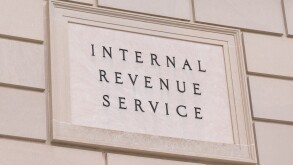One of the largest amendments to Polish real estate taxes (RET) in the past 20 years enters into force in 2025, although it does not constitute a revolution in the principles of taxation. The changes particularly concern the scope of taxable property. Among the real estate taxation rules that have been retained, land will be taxed based on the area, buildings on floor space, and structures on gross book value. The object of these changes is not the introduction of a cadastral tax, although that cannot be ruled out in the future.
The new regulations, which will determine the amount of RET liability for 2025, will mostly affect business entities. This is because this group of taxpayers is the only one obliged to pay RET on structures, the definition of which will undergo the deepest modification. A new, detailed appendix has been added to the Law on Local Taxes and Fees, containing 28 types of structures grouped according to their utility or technical features. However, the regulations still provide for open, undefined definitions, which are likely to cause disputes.
Summary of the main changes under the new regulations
The key changes include new definitions of:
A building;
structure;
A permanent connection to the ground; and
A construction object.
Despite the Ministry of Finance’s declared position on maintaining the fiscal status quo, the upcoming changes will certainly involve an increase in the fiscal burden with regard to RET for some enterprises. Those in the industrial sector should be particularly careful about their RET settlements in 2025.
The most controversial element of the new regulation is the broad tax base for technical devices and industrial installations; among others, through the category of construction equipment. It is not only the technical aspect of the asset that matters, but also the function and use. Tanks, silos, , and other facilities related to storage have become particularly sensitive types of assets. The regulation provides for real estate taxation on all components, including the technical part, as structures; i.e., 2% of their gross book value annually.
For some industries, such as the renewable energy sector (RES), the new regulations have been favourably structured. As a result of the generally positive attitude towards green energy, it was possible to guarantee favourable taxation for facilities such as wind farms, photovoltaic farms, and energy storage facilities. They are to be taxed (only) on the construction part; i.e., usually on approximately 20–35% of capital expenditure. Nevertheless, the degree of complexity of the new regulations does not completely exclude the risks of real estate taxation by tax authorities on certain technical equipment serving RES facilities, such as transformers.
Exceptionally, in 2025, taxpayers can take advantage of an extended deadline for filing RET returns, which has been increased by two months, to March 31 2025. However, it is necessary to notify the competent authority in writing and make tax instalment payments within standard statutory deadlines in the amount of the average RET instalment for 2024.
Poland’s real estate tax update: a final word for businesses
The scope of the changes regarding RET is so large that it is worth considering full verification of the property to be taxed with RET. This especially applies to businesses based on a significant amount of real estate, structures, and equipment.













